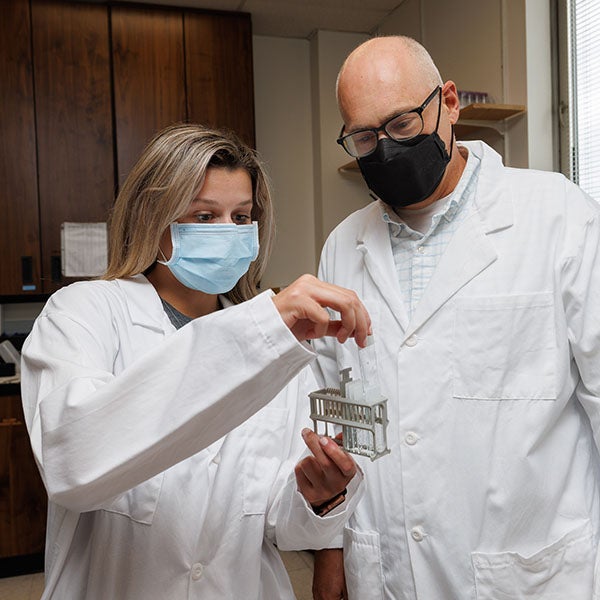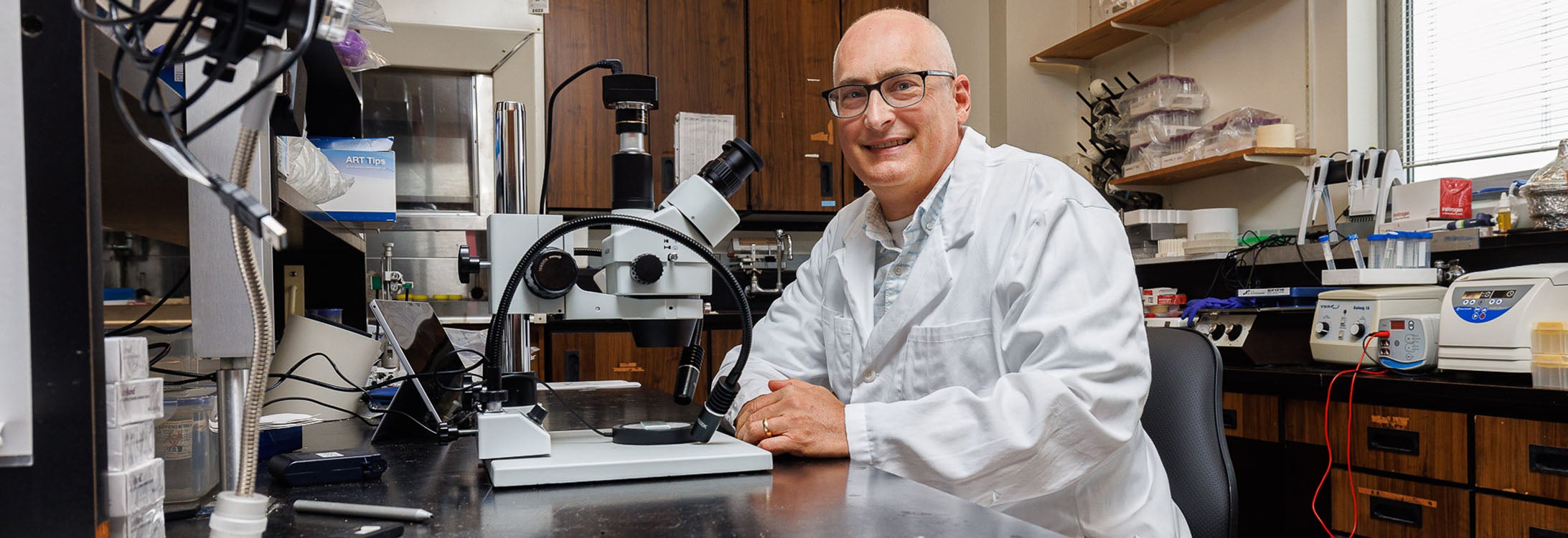COVID-PARKINSON’S LINK
ECU researchers find possible link between COVID-19, Parkinson’s disease
A team of scientists, led by researchers from East Carolina University’s Brody School of Medicine, have identified another problem stemming from COVID-19 infections — the potential for greater risk of Parkinson’s disease.
The ECU contingent of researchers — Dr. Jeffrey Eells, Dr. Shaw Akula, Dr. Srinivas Sriramula and Dr. Dorcas O’Rourke — were joined by Dr. Rich Smeyne from Thomas Jefferson University and Dr. Pete Schmidt from New York University in a study of how COVID-19 infections could increase the likelihood of developing Parkinson’s disease.
Through studying pre-clinical models that had recovered from COVID-19 exposure, the research team determined that the subjects were more sensitive to the effects of a Parkinson’s Disease-inducing toxin. The models that showed Parkinson’s-like brain disruption were infected with COVID-19, but did not get noticeably ill, much in the way that most humans infected with COVID-19 may have felt sick but did not need to be hospitalized.
“I think this model represents people that are more susceptible to the virus infections. The subjects that we used got infected, because they have antibodies to the virus, but they weren’t really sick,” said Eells, an associate professor of anatomy and cell biology at Brody.

Eells and Kristen Armel, a second-year medical student from Raleigh, look at slides in a laboratory at the Brody School of Medicine.
The team’s results reflect similar findings from an analysis of nearly one million Danish health records that found COVID-19 patients were more likely to be diagnosed with Parkinson’s disease, as well as Alzheimer’s disease, stroke and bleeding in the brain. Cases of Parkinson’s, or Parkinson’s-like conditions, following positive testing for COVID-19 have also been reported in Israel, Spain and Italy.
In the early days of the COVID-19 pandemic, Eells began to consider the long-term consequences of the new virus. Eells and his team secured a portion of the CARES Act funding ECU received from the North Carolina General Assembly in 2020 and began work in February 2021 with the study results accumulating into the final paper in the fall of 2021.
“We’re seeing a lot of long-COVID patients now who are still having symptoms six months, a year or two years out after being infected. But there’s also the potential that those infections could have consequences later on in life,” Eells said. “It’s going to be five to 10 years before we have any of this epidemiological data to say ‘yes, it does increase risk for neurological disorders or neurodegenerative disorders.’”
Eells and his team suggest that flu and COVID-19 share a common trait — they increase the inflammatory response within the body, which may prompt the brain to release proteins to fight the initial infections. These proteins — proinflammatory cytokines and chemokines — are thought to set the conditions for further damage to the nervous system. The 1918 influenza pandemic was associated with an increased rate of Parkinson’s disease and influenza infections causing hospitalization have been shown to elevate the risk for developing Parkinson’s.
While other respiratory viruses, particularly the 2009 H1N1 flu strain, showed similar Parkinson’s-inducing effects as COVID-19, those diseases weren’t as likely to cause the same levels of damage to the nervous system, resulting in the possibility of development of Parkinson’s-like symptoms.
The authors of the ECU-led study suggest that COVID-19 could have a significant impact on society if those infected do end up more susceptible to Parkinson’s disease creating the possibility of “a substantial burden on patients, families, and society” in the coming years and decades.
Eells said that the study is particularly important for Parkinson’s research because it gives a window into how a virus impacts the totality of the organs and systems in the human body. Viral infections affect different hosts in different ways, which necessitates further study of COVID-19’s interaction with the body.
A virus in an animal might produce no symptoms of disease, but the same dose of the same virus in a human could be lethal, Akula said.
“Different viruses behave differently. Some may cause pathogenesis in human beings and zero in animals,” Akula said.
This study gives Eells a glimmer of hope that understanding how infections like COVID-19 increase the risk of developing Parkinson’s might lead to treatments that reduce the risk that infections and other inflammatory conditions might lead to the onset of neurodegenerative diseases.
“Using this model will allow us to test hypotheses about how infections could increase the risk Parkinson’s disease with the goal of finding treatments to prevent or eliminate COVID-19 as a risk,” Eells said.
The ECU researchers are already refining their findings on a study that may implicate COVID-19 in the exacerbation of Alzheimer’s and other dementia-like conditions.
“We’re interested in other neurodegenerative disorders, specifically multiple sclerosis, as well as Alzheimer’s disease,” Eells said. “Any time you increase the level of inflammation, that increases the risk that you’re going to develop a neurologic or neurodegenerative disorder later on.”
